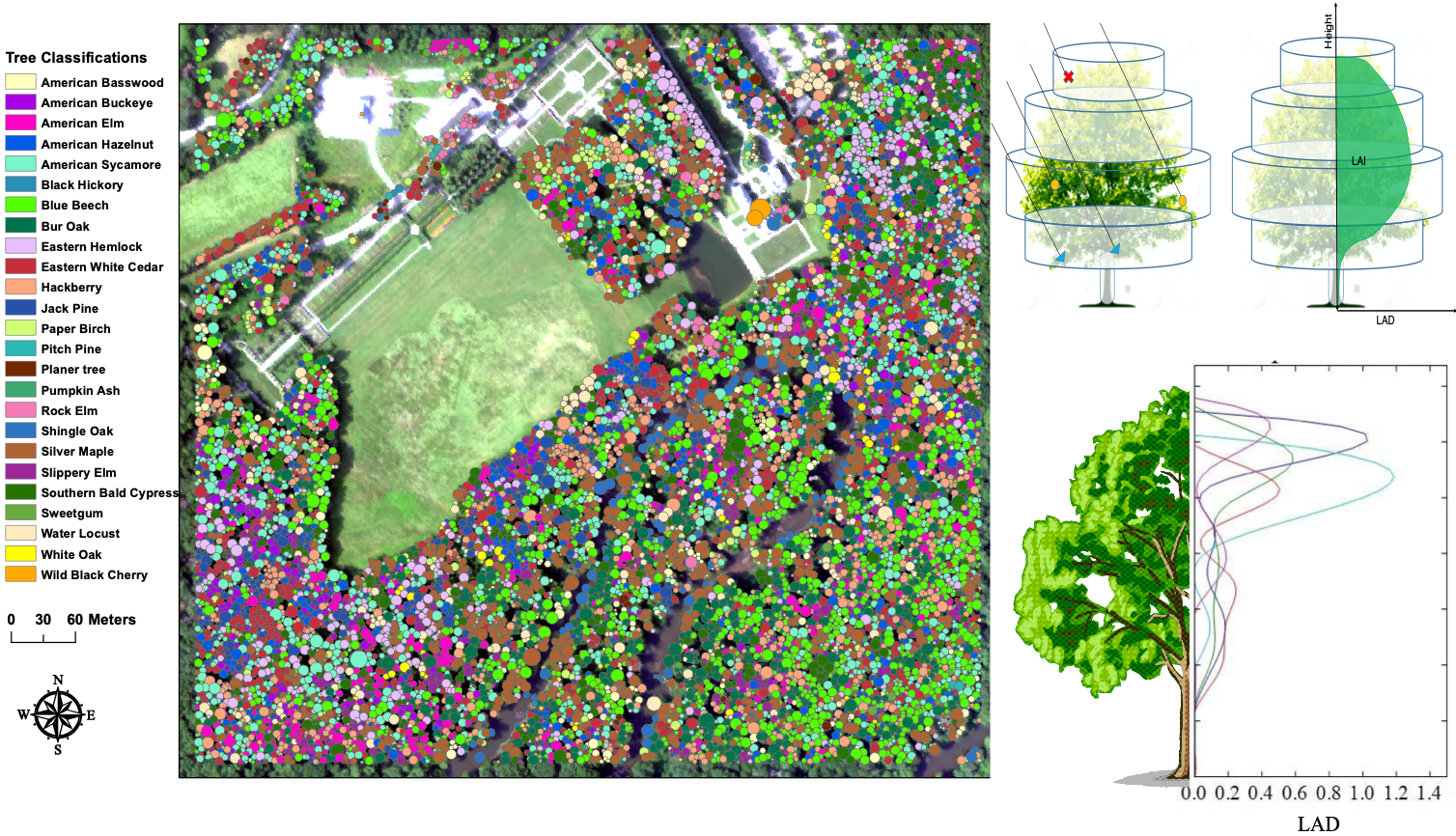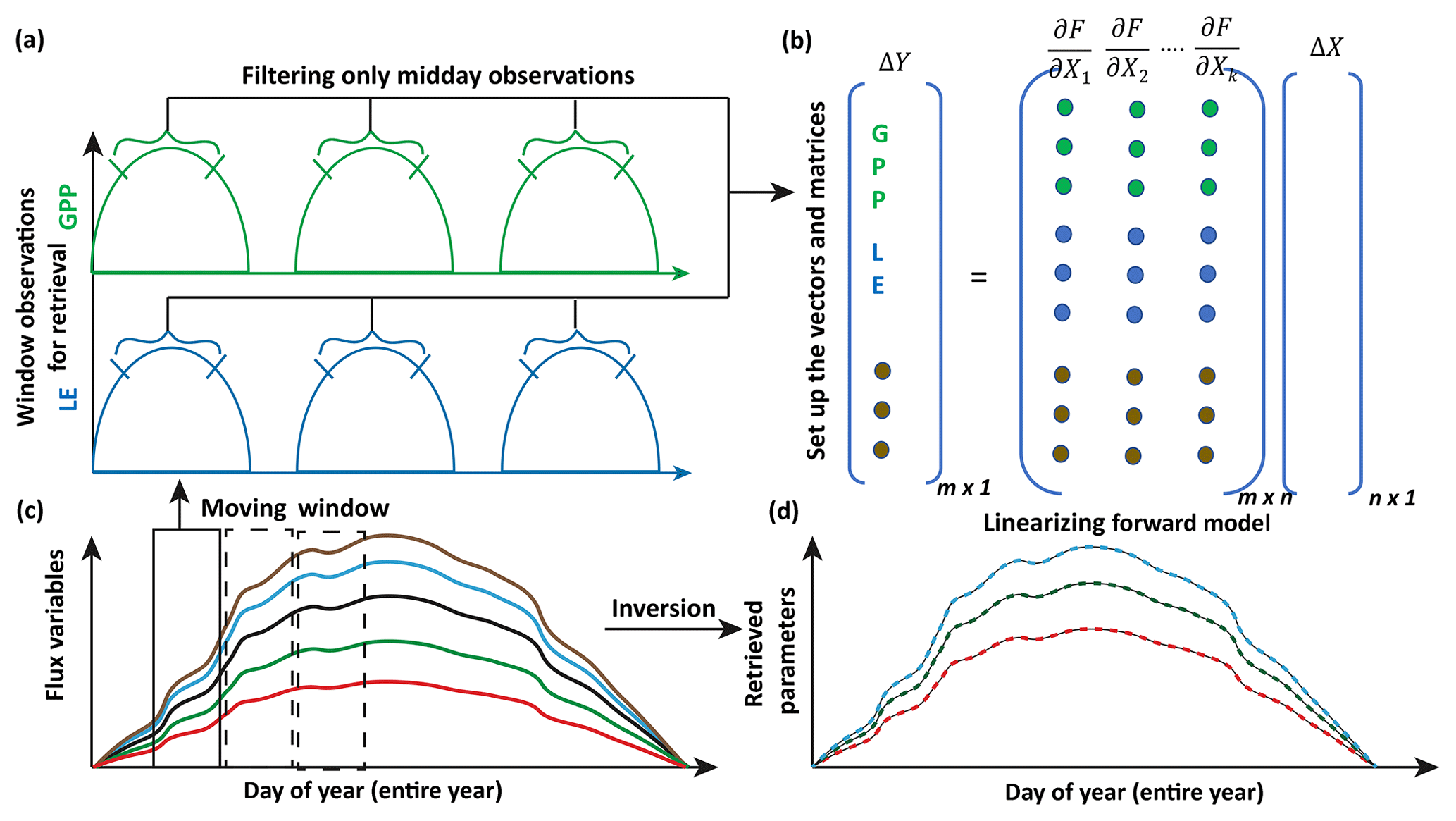Quantitative Characterization of Surface Soil Attributes using Imaging Spectroscopy (top)
Soil textural attributes (% sand, silt, clay) on the landscape are important for hydrological modeling. Soil organic matter together with macro and micro nutrients are extremely important for assessing the soil health and plant productivity. We have demonstrated that it is possible to quantify these soil attributes at very high spatial resolutions using airborne imaging spectroscopy having high signal to noise ratio of the sensor. We further demonstrate that the methodology based on statistical learning frameworks may be applicable for a range of constituents with limited gound samples and potentially be applicable from space based hyperspectral observations.
Fig. High-resolution spatial prediction map of soil texture shown as tricolor RGB composite for percentages of sand, silt, and clay (left) and soil organic matter content (right) for Bird’s Point New Madrid Floodway. Large-scale legacy landscape features of the Mississippi River are clearly observable.
Reference(s):

